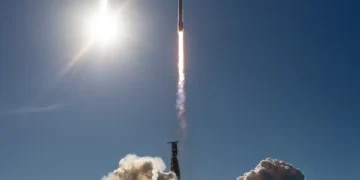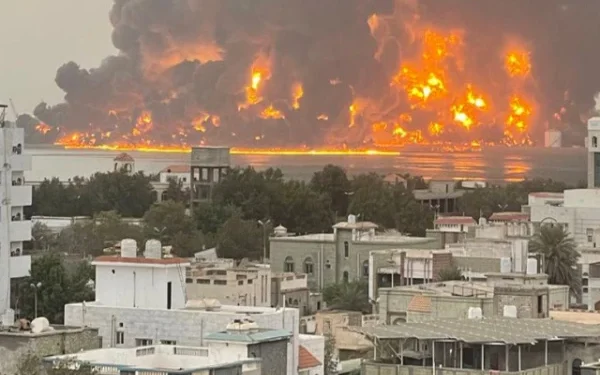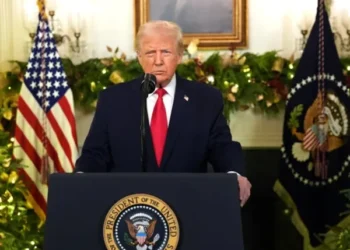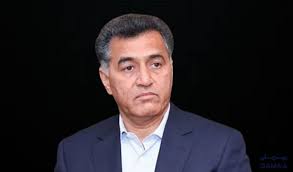Introduction: Renewed Tensions in Yemen
The conflict in Yemen took another serious turn as US warplanes targeted a major oil facility on the country’s west coast. This strike, carried out on the Ras Isa oil port, is the first publicly acknowledged action in weeks amid the ongoing US military campaign against the Iran-backed Houthi rebels. The strike represents a significant escalation in the US strategy to cripple the Houthis’ financial infrastructure and disrupt their operations in the region.
The US Central Command (CENTCOM) issued a formal statement confirming the attack, stating the goal was to eliminate a major source of fuel and revenue for the Houthis, whom Washington classifies as a terrorist organization.
Details of the US Airstrike on Ras Isa Oil Port
Location and Strategic Importance
The Ras Isa oil terminal, located on Yemen’s west coast along the Red Sea, is one of Yemen’s key ports. It plays a vital role in the import of essential goods and humanitarian aid into the war-torn country. Its strategic position also makes it crucial for the control of energy supplies and maritime routes, many of which are essential for global commerce.
However, US officials claim that the Houthis were exploiting the port for illegal activities, using it as a hub for fuel storage and generating illicit income to fund their operations, including attacks on international shipping in the Red Sea.
Casualties Reported
According to reports from a Houthi Ministry of Health spokesperson, the airstrike was devastating. On social media platforms, the Houthis claimed that at least 20 workers at the port were killed, and more than 50 others were injured during the US bombardment. These casualties reportedly included civilians working at the site, although the US military has not confirmed these figures.
The humanitarian toll of the strike has raised concerns among international aid organizations, who fear that attacks on critical infrastructure could worsen Yemen’s already dire humanitarian crisis.
US Central Command’s Justification
In its statement, CENTCOM emphasized that the strike was necessary to deprive the Houthis of illegal sources of revenue. The US military argued that by targeting facilities like Ras Isa, they aim to weaken the Houthis’ financial backbone, thereby reducing their capability to launch further attacks in the region.
The US further maintains that the fuel stored at the facility was being used not for humanitarian purposes but for funding militant operations, including the deployment of drones and missile systems threatening international merchant vessels navigating through the Red Sea.
Background: The US-Houthi Conflict Escalation
Origins of the Military Campaign
Since mid-March 2025, US forces have conducted a sustained air campaign against Houthi targets in Yemen. The campaign was initiated after repeated Houthi attacks on commercial shipping routes passing through the Bab el-Mandeb Strait and the Red Sea, areas critical for global trade flows, including oil shipments.
The Pentagon had outlined the mission’s goals at the start of the operation:
- Protect international shipping lanes
- Reduce the Houthis’ offensive capabilities
- Pressure the Houthis economically and militarily
Despite the initial briefings, US officials have been notably tight-lipped about the exact scope and success of the operation, often citing operational security concerns.
Houthi Threat to Global Trade
The Red Sea is one of the world’s busiest maritime corridors. Disruptions here can have global economic repercussions, affecting oil prices, supply chains, and international commerce.
- About 10% of global trade passes through the Red Sea.
- Approximately 9% of the world’s oil transported by sea moves through this route.
The Houthis’ ability to threaten or disrupt traffic in this vital artery prompted a strong response from the US and its allies.
Reactions to the Strike
Houthi Response
The Houthis have condemned the airstrike, accusing the US of aggression and violating Yemen’s sovereignty. In official statements, Houthi leaders warned of retaliatory actions against US interests in the region and vowed to continue their resistance.
They also emphasized the human cost of the attack, drawing attention to civilian casualties, and called for international condemnation of what they termed “US war crimes.”
International Concerns
Human rights organizations and humanitarian groups have expressed concern over the potential impact of such strikes on Yemen’s already fragile humanitarian situation. Yemen is facing one of the world’s worst humanitarian crises, with millions of people dependent on imported food, fuel, and medical supplies.
Targeting infrastructure critical for the civilian population, even if used partially by combatants, risks worsening shortages and could lead to further civilian suffering.
US Domestic Perspective
Within the United States, reactions have been mixed. Some political figures have expressed support for the Biden administration’s efforts to protect global trade and counter Iranian influence in the Middle East. Others, however, have questioned the wisdom of deepening American military involvement in Yemen, fearing a potential quagmire similar to previous US engagements in the region.
Impact of the Strike on the Houthi Movement
Damage to Financial Resources
The US military claims that the strike has significantly damaged the Houthis’ financial and operational capabilities. Although specific figures regarding the extent of damage remain classified, officials state that cutting off fuel revenue will severely restrict the Houthis’ ability to procure weapons, fund operations, and maintain their network.
Strategic Blow or Temporary Setback?
While the strike undoubtedly delivers a blow to the Houthis’ financial streams, experts caution that it may not be a long-term solution. The Houthis have historically shown resilience and adaptability, often finding alternative means to finance their operations through taxation, smuggling, and support from external actors such as Iran.
Some analysts believe that unless coupled with a broader political strategy, military actions alone may not bring about lasting peace or deter future attacks.
Future Outlook: What’s Next?
As tensions remain high, the future of US operations in Yemen remains uncertain. Key questions include:
- Will the US escalate its military involvement if Houthi attacks continue?
- Can diplomatic efforts succeed in reducing violence in the Red Sea and Yemen?
- How will this campaign affect the broader US-Iran relationship?
There are growing calls for renewed diplomatic efforts, including engaging regional powers and the United Nations, to negotiate a political settlement that addresses the root causes of the Yemen conflict.
Conclusion: A High-Stakes Game in the Red Sea
The US airstrike on the Ras Isa oil port marks a critical escalation in the confrontation with the Houthis. While the immediate aim is to cut off their financial resources and secure global trade routes, the risks of broader regional instability remain high.
As the world watches closely, the actions taken in the coming weeks will be pivotal in determining whether the Red Sea remains a secure passage for international trade — or becomes a new flashpoint in an already volatile Middle East.

























